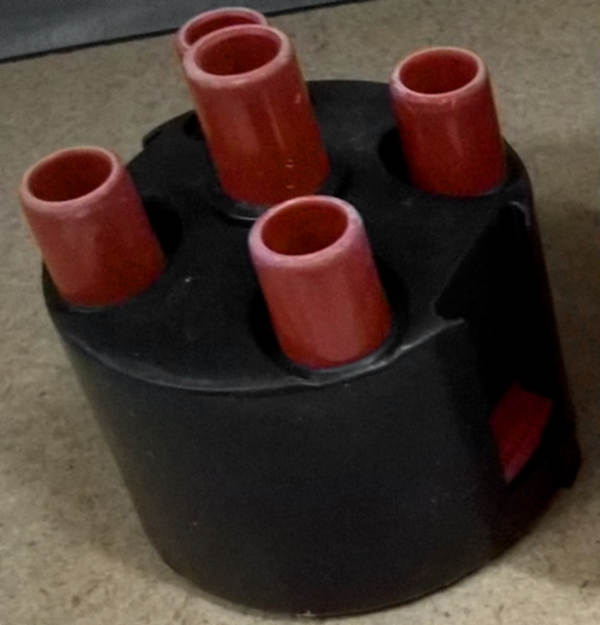On vehicles with a distributor, as opposed to the distributorless ignition systems of modern engines, the engine's distributor controls the ignition timing, which is when each individual spark plug fires.

Distributor Caps
The cap of the distributor usually contains the contact points within it, and can often be rotated to adjust timing. The cap also has posts where the spark plug wires can be plugged in. The cap tends to be round, since the internal components spin within it, but sometimes it has other shapes to form to the engine or hold an ignition coil.
Distributor Rotor Button
Usually just referred to as a rotor in the context of distributors, or a distributor rotor outside context, the distributor rotor button spins inside the distributor assembly and makes contact with each point as the connected spark plug needs to fire. It typically has one metal contact, but may have a weight on the other side to improve balance or a second contact in a waste spark system.
Points
The distributor points are a contact breaker that turns power to the ignition coil (primary circuit) on and off. The points are typically on the ground side of the electrical circuit.
Sensor
Many distributor systems use a hall-effect sensor or optical sensor to determine the timing.
Condenser
A condenser is a capacitor, a type of electrical component that can quickly absorb and discharge electrical energy.
Timing Advance
Non-electronic methods of advancing the timing are vacuum advance and mechanical advance.
Ignition Control Module
The ignition control module is often located inside the distributor, and electronically controls when power is supplied to the rest of the distributor.
Installing a Distributor by MSD
- Cap
- Rotor
- Points
- Hall Effect/Optical Sensor
- Condenser
- Mechanical/Vacuum Advance
- Ignition Coil
- Ignition Control Module
